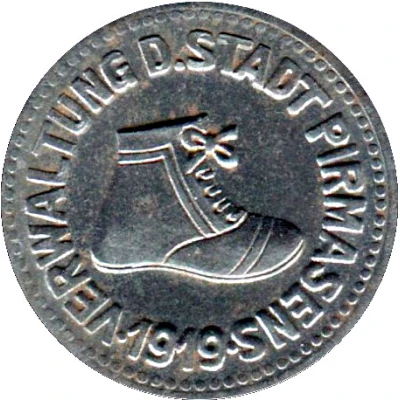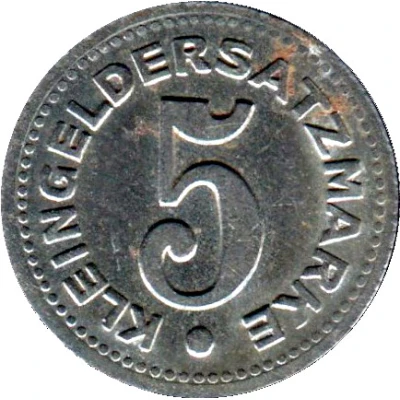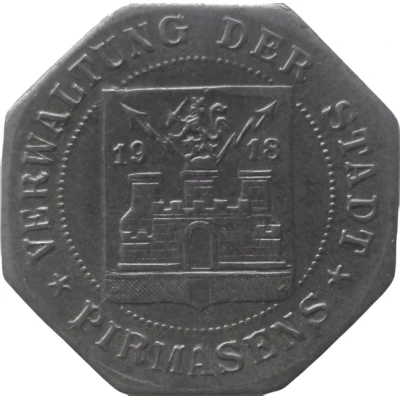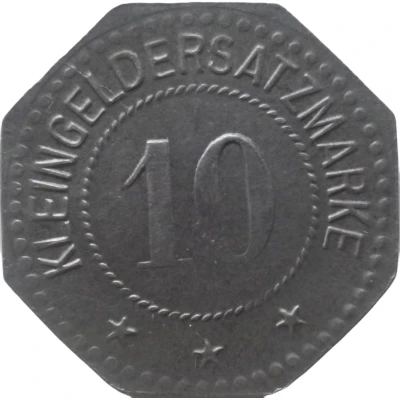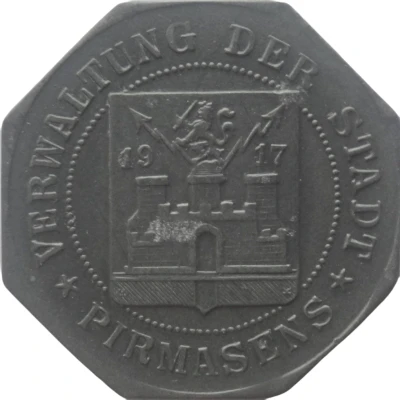
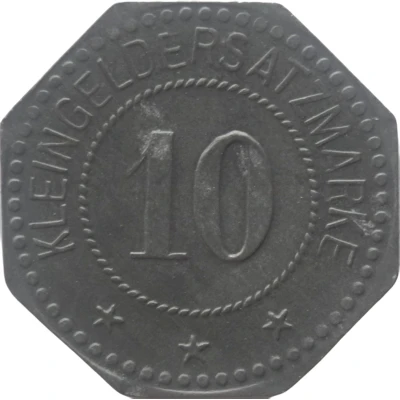

© Willem63 (CC BY-NC-SA)
10 Pfennigs - Pirmasens
1917 year| Zinc | 2.1 g | 20.6 mm |
| Issuer | City of Pirmasens (Federal state of Bavaria) |
|---|---|
| Emperor | William II (Wilhelm II) (1888-1918) |
| Type | Standard circulation coin |
| Year | 1917 |
| Value | 10 Pfennigs (10 Pfennige) (0.10) |
| Currency | Mark (1914-1924) |
| Composition | Zinc |
| Weight | 2.1 g |
| Diameter | 20.6 mm |
| Thickness | 1.0 mm |
| Shape | Octagonal (8-sided) |
| Technique | Milled |
| Orientation | Medal alignment ↑↑ |
| Demonetized | Yes |
| Updated | 2024-10-04 |
| Numista | N#19853 |
|---|---|
| Rarity index | 39% |
Reverse
Pearl rim, legend surrounding rope circle with denomination centered
Script: Latin
Lettering:
KLEINGELDERSATZMARKE
10
★ ★ ★
Translation: Mark small money substitute
Edge
Plain
Comment
Issuing body: [Stadt, Pfalz].Interesting fact
The 10 Pfennigs coin from Pirmasens, Bavaria, 1917, made of zinc, and weighing 2.1 grams, is interesting because it was issued during a time of economic and political turmoil in Germany. The country was facing hyperinflation, and the government was struggling to maintain the value of its currency. In response, they introduced a new currency, the Rentenmark, which was pegged to gold and was intended to stabilize the economy. The 10 Pfennigs coin was part of this effort, and it was produced in large quantities to help facilitate everyday transactions. Despite the challenges of the time, the coin remains a fascinating piece of history and a testament to the resilience of the German people.
Price
| Date | Mintage | VG | F | VF | XF | AU | UNC |
|---|---|---|---|---|---|---|---|
| 1917 | 250000 | - | - | - | - | - | - |
Values in the table are based on evaluations by sales realized on Internet platforms. They serve as an indication only for 10 Pfennigs - Pirmasens 1917 coin.
